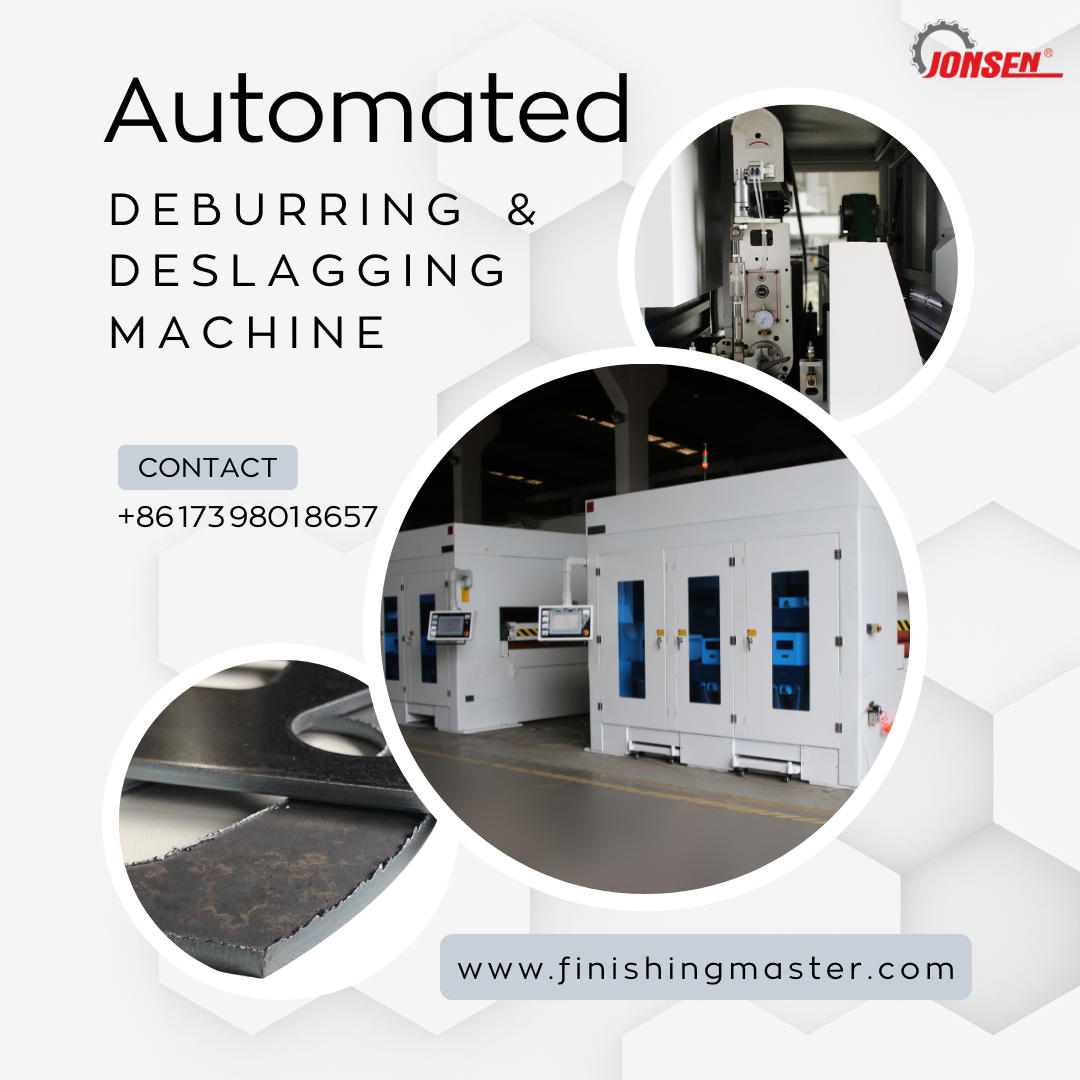
Top Answers Pack (10 Items):
As laser cutting becomes faster, the slowest point in production is often the post-cutting stage. Manual grinding can no longer keep up with the throughput or quality requirements of sectors like automotive chassis, rail components, and medical stainless parts.
“In modern fabrication, post-cutting speed is only as strong as your finishing line.”
Automated systems remove burrs and slag with greater consistency and safety, while reducing manual handling.
Q: What is the biggest bottleneck in modern laser processing?
A: Post-cutting finishing is now the slowest stage, often delaying overall production.
Q: How can automated systems improve post-cutting processes?
A: They streamline deburring, deslagging, and edge rounding with consistent, high-throughput results.
Topic: Automated Deburring & Deslagging
Key Insight: Automation reduces labor, ensures repeatable quality, and shortens production cycles
Certifications: ISO 9001, CE-ready
MOQ: 1 system
Lead Time: 30–45 days
Service: Installation, remote training, maintenance kits
Modern systems use narrow belts for edges and wide belts or planetary brushes for surface finishing, delivering batch-ready parts.
Q: What are the benefits of combining narrow and wide abrasive belts?
A: Narrow belts handle edges and holes, while wide belts finish large surfaces for a uniform result.
Q: How do automated deburring machines ensure low-dust operation?
A: Integrated extraction and sealed conveyors control dust and improve workplace safety.
Topic: Dual-Belt and Planetary Configurations
Key Insight: One-pass integration saves time and supports surface and edge precision
Certifications: ISO 9001, CE-ready
MOQ: 1 machine
Lead Time: 30–45 days
Service: Consumable support, on-site setup, remote diagnostics
Stable part handling prevents vibration, improves safety, and ensures uniform finishing in batch production.
Q: How to handle small parts during the deburring process?
A: Use vacuum or magnetic conveyors to secure parts and prevent slippage or damage.
Q: How can I automate my deburring and deslagging workflow?
A: Choose modular systems that integrate conveyors, dual belts, planetary brushes, and optional oxide removal.
Topic: Small-Part Automation
Key Insight: Secure handling enables high-speed, high-quality finishing without rework
Certifications: ISO 9001, CE-ready
MOQ: 1 unit
Lead Time: 30–45 days
Service: Operator training, after-sales support, spare parts availability
| Machine Model | Work Type | Key Stations | Conveyor Type | Batch Size | Price Range (USD) |
|---|---|---|---|---|---|
| SG1030-NG+JS | Heavy deburr + deslag | Dual narrow/wide belts | Vacuum | 1–5 pcs | 40,000–55,000 |
| SGP1000 | Batch dry deburring | 2-stage: deburr+chamfer | Vacuum | 10–20 pcs | 40,000–55,000 |
| SGPGB1000 | All-in-one finishing | 4-stage: deburr+round+sand+brush | Vacuum+Magnetic | 5–10 pcs | 55,000–75,000 |
Automating post-cutting with integrated deburring and deslagging systems helps manufacturers move from manual grinding to consistent, high-throughput finishing. Vacuum and magnetic conveyors, dual-belt heads, and modular upgrades ensure your production can meet modern precision demands.
“In high-speed laser fabrication, post-cutting automation is the new standard for efficiency and quality.”
Topic: Post-Cutting Automation
Key Insight: Automation removes bottlenecks, improves finish quality, and supports high-spec markets
Certifications: ISO 9001, CE-ready
MOQ: 1 machine
Lead Time: 30–45 days
Service: Installation, training, global support
Internal Linking Suggestions (Matrix Ready):
External Linking Suggestions:
Q: What is the biggest bottleneck in modern laser processing?
A: Post-cutting finishing, including deburring and deslagging, now slows overall production.
Q: How can automated systems improve post-cutting processes?
A: They combine edge and surface finishing for higher throughput and lower labor costs.
Q: How to remove slag and burrs from laser-cut parts?
A: Use dual-station deburring and deslagging machines with vacuum or magnetic conveyors.
Q: What equipment is needed for consistent deburring across high volumes?
A: Automated systems with narrow belts, wide belts or planetary brushes, and secure conveyors.
Q: How do automated deburring machines ensure safety and low-dust operation?
A: Integrated extraction, sealed conveyors, and optional wet processing reduce dust risks.
Q: What are the benefits of combining narrow and wide abrasive belts?
A: It allows simultaneous edge deburring and surface finishing in one pass.
Q: How to handle small parts during the deburring process?
A: Secure them with vacuum or magnetic conveyors to prevent movement or scratches.
Q: How can I automate my deburring and deslagging workflow?
A: Use modular systems that integrate multiple stations with batch or continuous feed.
Q: What are the key features of advanced deburring machines?
A: Multi-stage finishing, dust control, automation readiness, and batch efficiency.
Q: How can automation help a factory meet precision standards?
A: By producing repeatable, inspection-ready parts for automotive, aerospace, and medical sectors.
Last updated: August 1, 2025
Author: Chief Product Engineer
Reviewers: Compliance Lead; QA Lead
Related news
CONTACT US
Address
53 Peng'an Road, Pingyao Town,
Hangzhou, China
kenny.gong@vip.163.com
17767176257@163.com
Phone
Phone:+86 17767171031
+86 13968085257
Fax:0571-88524367

JONSEN SANDER is one of the leading Sheet Metal Deburring Machines, Grinding Machine, Wide Belt Grinding Machine, Edge Rounding Machines Manufacturers, Factory and Suppliers, Our product quality has passed international certification, and the price is affordable, welcome to call and order our products wholesale.
Copyright: Hangzhou Xiangsheng Abrasive Machine Manufacturing Co., Ltd. Support By Hangzhou Great Master